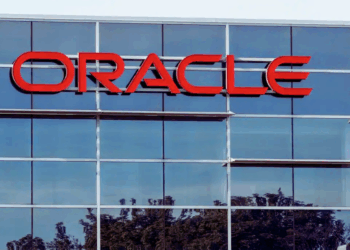Due to the advent of novel and disruptive technologies during the past 25 years, contemporary society has undergone a number of significant transformations. People can now easily access information and communicate with one another from the comfort of their homes thanks to the Internet and connected personal computers. PC manufacturers, software developers, and upstarts like America Online all experienced double- and even triple-digit growth. Companies that failed to foresee the impact of the Internet were simultaneously destroyed. Those that do not change may swiftly lag behind, losing market share, power, and money. The nine technologies that will change the world are covered in this report.
3D Printing
While Star Trek-style matter replicators are still a ways off, 3D printing is a wonderful place to start. We can “print” a variety of objects if we have the right hardware, software, and raw materials. This graph demonstrates how popular 3D printing is becoming and where it is expected to go.
Since 3D printing enables individuals to manufacture anything they require on-site, the industry may be affected, as well as the movement of commodities.
5G and Improved Connectivity
Fifth-generation mobile connectivity is now available, offering streaming of videos at astonishing speeds and of superior quality. Because of the compatibility with older versions of the protocols, stronger global connectivity, more bandwidth and video capacity, stricter security measures, and other factors, remote working will become a more attractive alternative. As mobile networking develops and grows, there will be a vast array of opportunities.
Artificial Intelligence and Machine Learning
Although AI has already played a significant role in our lives, neither its powers nor its ubiquity have yet realised their full potential. Despite substantial progress, artificial intelligence still has a long way to go in the customer service sector.
Businesses may better anticipate the next big thing by understanding how human habits and behaviour change thanks to artificial intelligence. More advanced algorithms are produced by AI developments, which help marketers adjust to changing markets and trends.
Automation and Robotics
Drones, autonomous vehicles, and robots have all grown in popularity in the manufacturing industry, but this is only the beginning. Gigabytes of words have already been written about how robots are a disruptive force in the workforce, replacing people with less expensive, more dependable machinery. It’s simple to uncover ominous forecasts of extreme unemployment following a machine takeover. This article claims that over 120 million workers will need to undergo retraining over the next few years due to robotics and AI.
Cyber Security Advances
Everywhere people congregate, criminals engage in shady activity, and these days, since everyone is online, we must also deal with cybercriminals. And to make matters worse, thieves have benefited from the coronavirus outbreak.
Thankfully, there have been advancements in cyber security to counter these dangers. Cybersecurity professionals now create stronger firewalls and intrusion detection systems as a result of developments in AI and machine learning.
Edge Computing
One of the IT industries’ most revolutionary technologies is edge computing. Fundamentally, it is an automated method of getting closer to the necessary compute power that is similar to that of the cloud, with fewer latency difficulties. Instead of completely getting rid of the cloud, it is being brought closer to you.
Edge computing provides more bandwidth, better security, and lower latency. As edge computing gains traction, it will either continue to undermine the larger cloud providers or give those businesses more power.
Virtual and Augmented Reality
Virtual reality is when a user is immersed in a synthetic environment created by a computer (VR). Augmented reality is when a user wears a headset or glasses and computer-generated pictures are projected into their field of vision (AR). They collectively make up the extended reality field (XR).
Headless Tech
No, this is unrelated to being beheaded. It speaks about technological advancements that let companies separate their front-end user experience from their back-end e-commerce data solutions. You are utilising headless technology if you ask your Amazon Alexa to order and send you the newest Stephen King book.
The Rise of “As-a-Service” Computing
We have been using this computational model for a long. We have platform-as-a-service, infrastructure-as-a-service, and software as a service (SaaS) (PaaS). These on-demand, cloud-based systems have completely changed the IT industry. For instance, why spend money on a hard copy of a word processor or video game when you can just subscribe to the cloud? Or how about Zoom, which has become incredibly well-known all across the world as a result of the pandemic?
Digital marketers will need to reconsider their strategy for enhancing search engine optimization as more individuals complete these voice-activated queries from their cars, jogging tracks, or neighbourhood cafes (SEO). Marketers will find themselves having to rely more on long-tail keywords than just picking only a handful.






